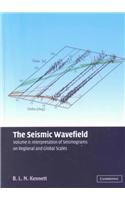Seismic Anisotropy in the Earth (Modern Approaches in Geophysics)

Buy online ($)
Type
Book
Authors
ISBN 10
0792313216
ISBN 13
9780792313212
Category
Unknown
[ Browse Items ]
Publication Year
1991
Publisher
Pages
219
Description
Structural geologists are well aware of the fact that isotropic rocks are quite exceptional in nature. Whicheverorigin, sedimentary,metamorphicormagmatic, rocks are shaped with a plane of mineral flattening, the foliation in geologists' jargon, and with a line ofmineral elongation, the lineation. Just like a good quarryman, a trained structural geologistwill detectapreferredorientationin an apparently isotropic granite. Preferred mineral orientation and thus structural anisotropy are the rule in nature. Consideringthe largevariationsinelasticcoefficientsofrock-forming minerals,itcould be predicted that, in turn, seismic anisotropy should exist and be important, provided thatdomains withasimilarstructural signatureare largeenough to affectseismic waves. This is why, in 1982 at a conference held in Frankfurt, which was oneofthe fIrst meetings devoted to the subject of seismic anisotropy, I asked Don Anderson the question of why seismologists had not considered earlier in their models the obvious constraint of anisotropy. I still remember Don's answer: "Adolphe, we knew that our isotropic models were not very good but we had no other choice. It is simply that, so far, computerswere not largeenough tointegrate the anisotropy parameter". Changingisotropic glassesfor anisotropic ones permits us to obtain betterand more realistic seismic modelsofthe Earth's interior, but, maybe more importantly, it has, for a seismologist, the farreaching consequenceofsteppinginto the fIeld ofgeodynamics. - from Amzon
Number of Copies
1
| Library | Accession No | Call No | Copy No | Edition | Location | Availability |
|---|---|---|---|---|---|---|
| Main | 104 | 1 | Yes |




